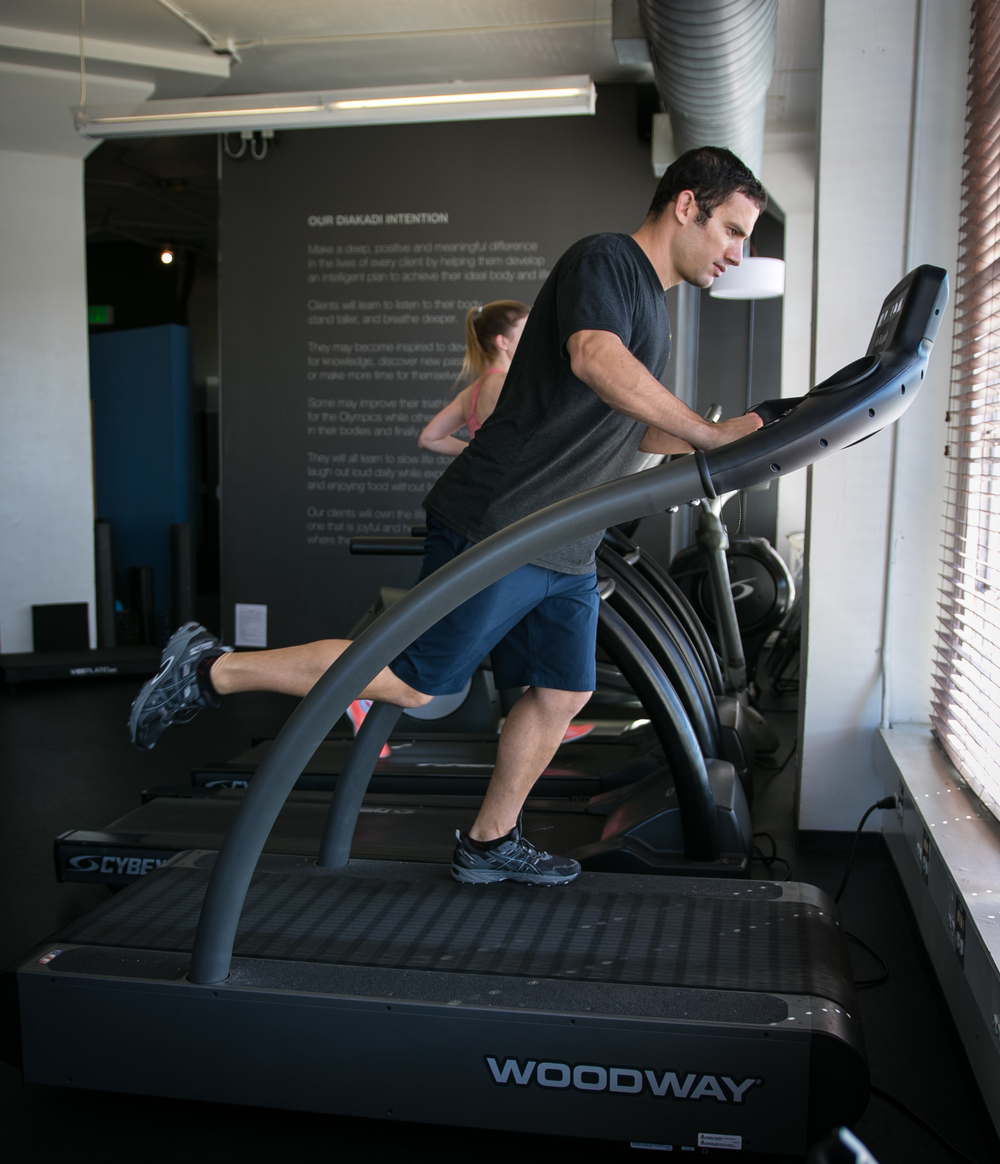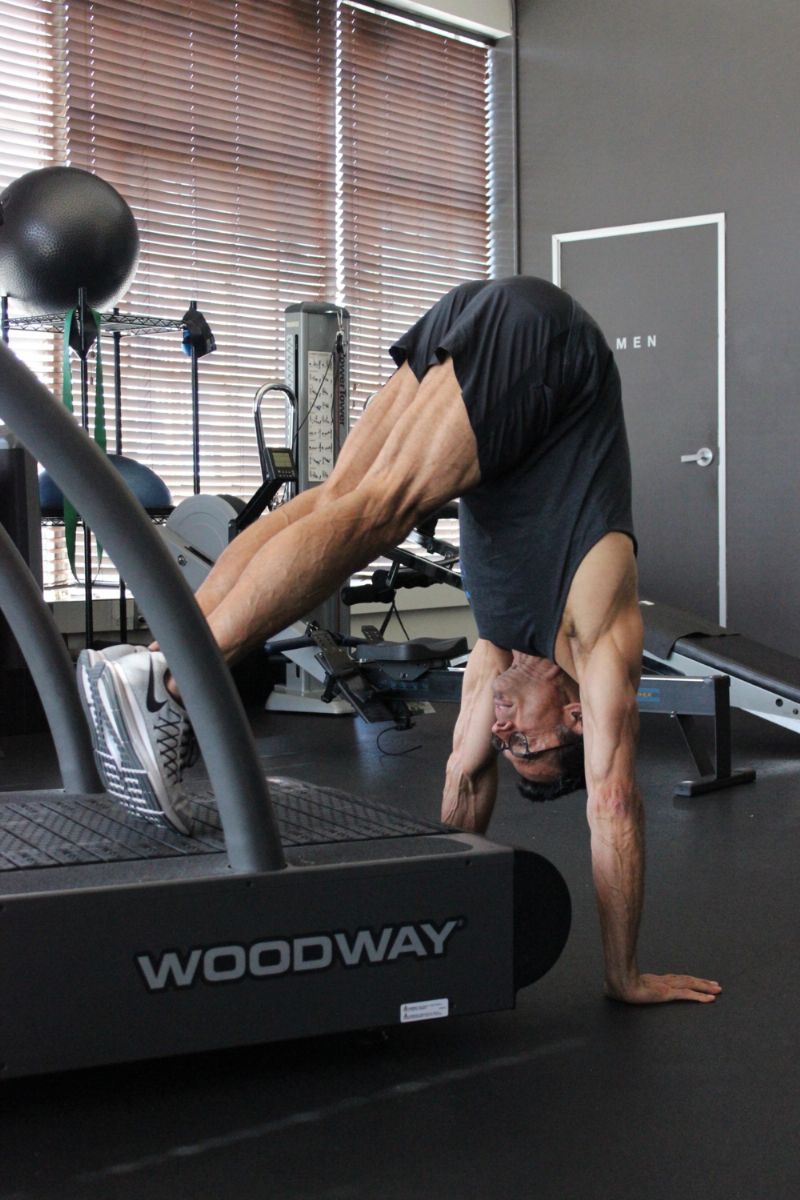|
Your enjoyment of any exercise is influenced by your environment. It's more fun to lift weights in a clean, high-energy gym. Yoga is more peaceful in a quiet park than in a house full of kids. The same goes for running: For most of us, the miles go much faster on a lakeside trail than they do on the dreaded “t-word.” The treadmill is one of the necessary evils of running, right up there with side cramps and chafing. Although it's usually not anyone’s first choice, there are inevitably times when inclement weather, late hours, lack of childcare or other circumstances force you to choose between running in place or not at all. It may be tempting to turn on the TV while cranking out your allotted mileage—but many trainers believe that type of distraction breaks the mind-muscle connection and makes workouts less effective. Plus, if you're wrapped up in media, you'll be more prone to missteps that could cause accidents. So aside from binge-watching your favorite Netflix series, how can you make treadmill training runs more tolerable? Billy Polson has some ideas. The fitness expert and founder of DIAKADI, the largest personal training and lifestyle facility in the Bay Area, believes that treadmills can get you on the fast track to your running goals. "Treadmills are notorious for epic running workouts," he says. "If you’ve been avoiding them, it's time to change your thinking." Polson tested these exercises on a Woodway treadmill, but you can try them on any machine. The workouts don't include any required mileage, which means you’ll get a full-body workout while adding some variety to your routine. The Moves 1. Bear Crawl Turn the treadmill to a safe, manageable speed for this movement. "I would start as low as possible, at .1 mph, and increase it until it feels comfortable for you," Polson recommends. "Everyone's starting speed will be different." Get into a push-up position with your hands on the solid running boards beside the belt, with your head toward the front of the machine. Perform a lower body bear crawl, with your legs climbing as your hands stay still. When you have completed the exercise, place your feet on the running boards to stop exercising before dismounting the treadmill. 2-3 sets, 20-40 seconds each. 2. Skateboard Stand on the treadmill but off to the side on the running boards. Hold onto the handles and then use the inside leg to push the belt backwards, as if you were riding a skateboard. Make sure there is a slight bend in the static leg to activate the glutes, quads and hamstrings.  3. Side Step Squats Stand on the treadmill, facing to the side. Hold onto the railing, slowly releasing it as you are able. Set the treadmill to a safe, manageable speed for this movement (Polson recommends starting as low as .1 mph and slowly increasing from there). As the belt begins to move at a slow speed, slowly step your lead leg out to a side squat width and perform a full squat. As you return to starting position, step both feet together before immediately stepping back into the next side squat. Repeat for a full set before turning around to do the other side. 2-3 sets, 10-30 squats in each direction. 4. Side Shuffle Hops Stand on the treadmill facing to the side. Hold onto the railing, slowly releasing it as you are able. Set the treadmill to a safe, manageable speed for this movement (Polson recommends starting as low as .1 mph and slowly increasing from there). Perform a full set in each direction. This is an ideal training movement for athletes looking to increase their lateral speed and agility, and is also a great interval to intersperse randomly throughout a treadmill jog. For example, every fourth minute, do 30 seconds of side shuffling in each direction. (Advanced: Try both sides as well as the transition between sides without holding on.) 2-5 sets, 15-30 seconds in each direction. 5. Pikes Begin at the foot of the treadmill with the treadmill off. Assume a plank position with your hands on the floor and feet on the belt. From here, draw the belly button toward the spine as the hips lift up and shoulders come into alignment above the elbows and wrists. Slowly return back to plank position.  6. Walking Lunges Stand on the treadmill facing to the front. Hold onto the railing, slowly releasing the assistance as you are able. Set the treadmill to a safe, manageable speed for this movement (Polson recommends starting as low as .1 mph and slowly increasing from there). As the belt begins to move, slowly alternate steps as you perform alternating leg walking lunges. 2-3 sets, alternating 10-30 lunges on each side. 7. Reverse Jog Stand on the treadmill facing the rear. Hold onto the railing and reverse walk as a beginner, slowly releasing your grip and reverse jogging as you are able. Set the treadmill to a safe, manageable speed for your level (Polson recommends starting as low as .1 mph and slowly increasing from there). This is a great interval movement interspersed randomly throughout a treadmill forward jog. (For example, every fourth minute, do a 30-second reverse jog.) 2-5 sets, 15-60 seconds. 8. Knee Tucks Maintaining a hold on the railing as described above, keep the body suspended the entire time and draw both knees toward the chest. Avoid letting your feet touch the belt until the final repetition. .jpg) 9. Plank Walk Begin at the foot of the treadmill with the treadmill off. Assume a plank position with your hands on the belt and feet on the floor. Lift your right hand off the belt as your left hand pushes the belt forward. Place your right hand back down as your left hand lifts and your right hand pushes the belt forward.  7 Treadmill Safety Tips
|
Related Entries
More From SparkPeople
|




.jpg)


















